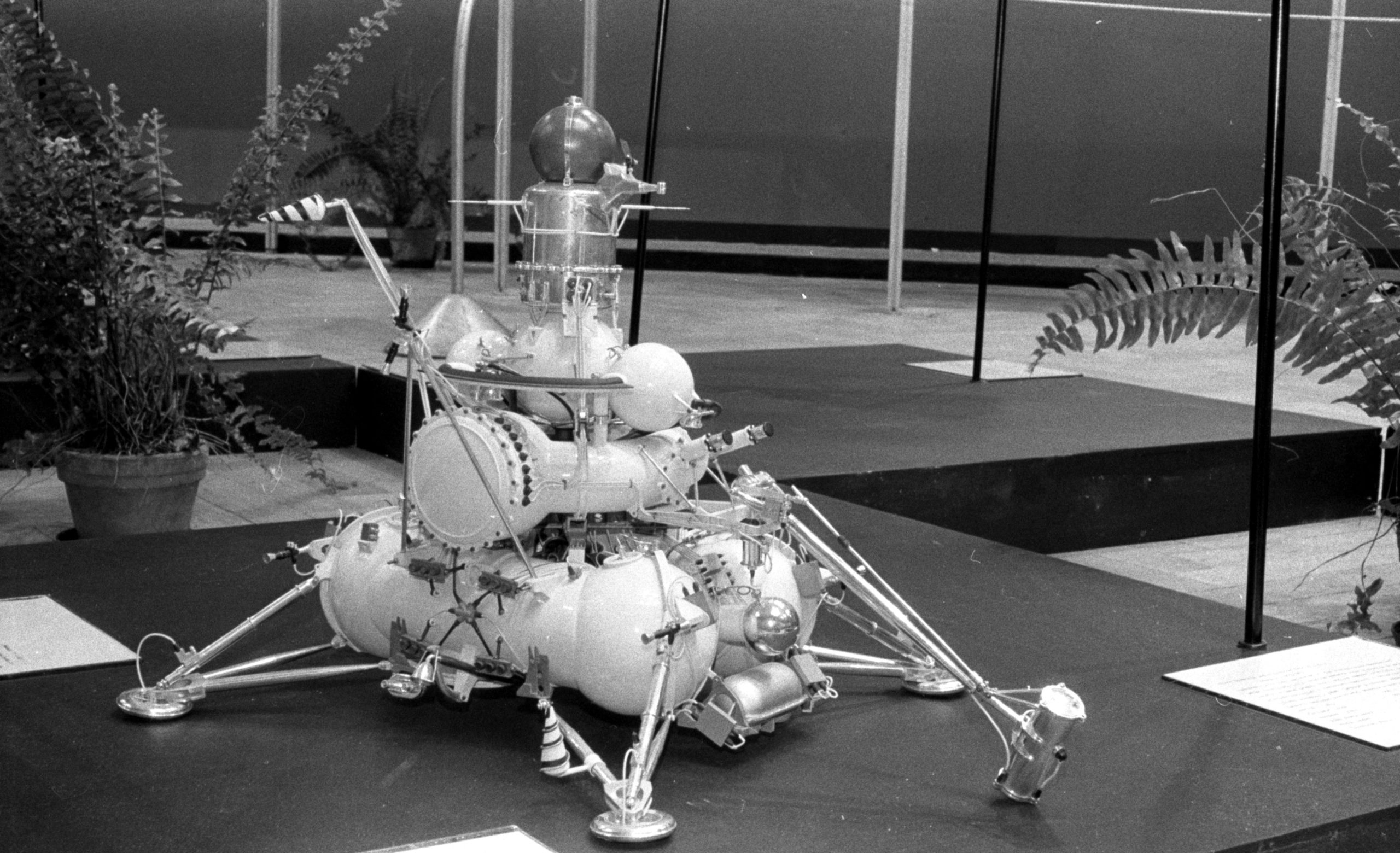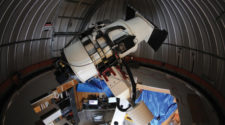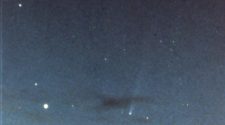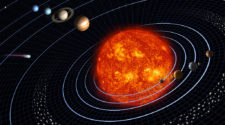AUGUST 16, 1898: DeLisle Stewart at Harvard College Observatory’s Boyden Station in Arequipa, Peru, takes photographs on which Saturn’s outer moon Phoebe is discovered, although the images of Phoebe were not noticed until the following March by William Pickering. Phoebe was the first planetary moon to be discovered via photography, and it and other small planetary moons are discussed in last week’s “Special Topics” presentation.
AUGUST 16, 2009: A team of scientists led by Jamie Elsila of the Goddard Space Flight Center in Maryland announces that they have detected the presence of the amino acid glycine in coma samples of Comet 81P/Wild 2 that were returned to Earth by the Stardust mission 3½ years earlier. Glycine is utilized by life here on Earth, and the presence of it and other organic substances in the solar system’s “small bodies” is discussed in this week’s “Special Topics” presentation.
AUGUST 17, 1877: Asaph Hall at the U.S. Naval Observatory in Washington, D.C. discovers Mars’ larger, inner moon, Phobos. Mars’ two moons, and the various small moons of the outer planets, are the subject of last week’s “Special Topics” presentation.
AUGUST 17, 1989: In its monthly batch of Minor Planet Circulars (MPCs), the IAU’s Minor Planet Center issues MPC 14938, which formally numbers asteroid (4151), later named “Alanhale.” I have used this asteroid as an illustrative example throughout “Ice and Stone 2020” “Special Topics” presentations.
AUGUST 18, 1877: The U.S. Naval Observatory in Washington, D.C., publicly announces the discoveries of Mars’ moons Phobos and Deimos by U.S.N.O. astronomer Asaph Hall.
AUGUST 18, 1976: The then-Soviet Union’s Luna 24 spacecraft successfully soft-lands in Mare Crisium on the lunar surface. After collecting 170 grams of soil samples it lifted off the following day and successfully returned these samples to Earth. Subsequent analysis of these samples produced the first evidence for the presence of water on the moon’s surface. Lunar water is among the subjects covered in this week’s “Special Topics” presentation.

AUGUST 18, 1985: Japan’s Suisei mission is launched from the Uchinoura Space Center at the southern end of the island of Kyushu. Suisei would be among the international armada of spacecraft that would encounter Comet 1P/Halley the following March. The 1986 return of Comet Halley is a previous “Comet of the Week” and the results from the various spacecraft missions are discussed in that Presentation.
AUGUST 20, 2018: A team of scientists led by Shuai Li announces that NASA’s Moon Mineralogy Mapper aboard India’s Chandrayaan-1 mission has confirmed the presence of water ice at both the moon’s North and South Poles. Lunar water is among the subjects covered in this week’s “Special Topics” presentation.
AUGUST 20, 2022: NASA’s Psyche mission is expected to be launched, with its destination being the large metallic main-belt asteroid (16) Psyche. Both the Psyche mission and its namesake destination are discussed in previous “Special Topics” presentations.
AUGUST 21, 1994: A team of astronomers led by Anita Cochran at the University of Texas utilizes the Hubble Space Telescope to obtain a series of very deep images in an attempt to detect very faint objects in the Kuiper Belt. Analysis of the images reveals the apparent presence of several dozen objects of about 28th magnitude, suggesting that the population of the Kuiper Belt may be on the order of 100 million objects. The Kuiper Belt is the subject of a future “Special Topics” presentation.
AUGUST 21, 2001: The Deep Ecliptic Survey at Cerro Tololo Inter-American Observatory in Chile discovers the asteroid 2001 QR322, the first-known “Neptune Trojan” asteroid. Trojan asteroids are the subject of a future “Special Topics” presentation.
AUGUST 22, 1888: A bright meteor is observed over Sulaymaniyah in present-day Iraq. According to reports at the time, meteorites fell “like rain” afterward, killing one man and severely injuring another. The reports have only recently been unearthed and are still being examined; this happened too late to be included in the “Special Topics” presentation on meteorites, which included a discussion on deaths and injuries caused by meteorite falls.
AUGUST 22, 2016: A bright fireball appears over the desert regions of South Australia. Studies of its trajectory suggest that, prior to its entry into Earth’s atmosphere, it may have been a temporary “moon” of Earth. Such objects are discussed in last week’s “Special Topics” presentation.
More from Week 34:
Comet of the Week Special Topic Free PDF Download Glossary
Ice and Stone 2020 Home Page


